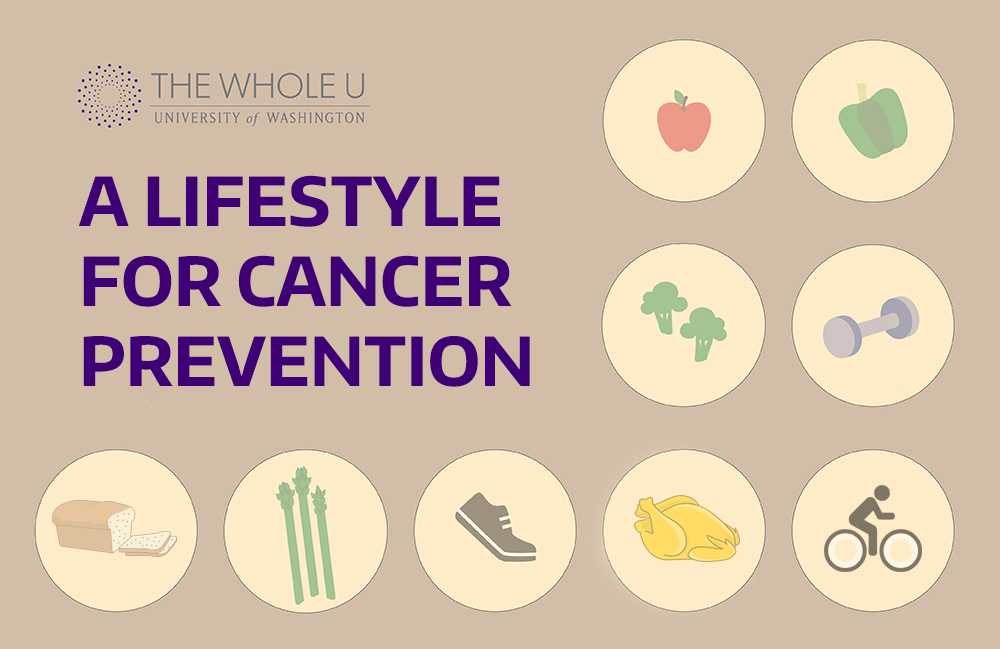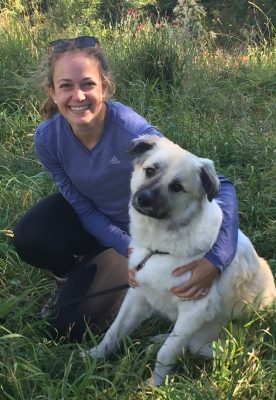
Lifestyle Changes That Could Reduce Your Risk for Cancer
Did you know the World Cancer Research Fund estimates that 20% of all cancers diagnosed in the United States (not including those related to tobacco use) could be prevented by lifestyle changes? Of the more than 674,000 estimated new cancer cases diagnosed in 2016, that’s potentially 134,000 lives changed—not to mention the many thousands of family members and friends whose lives cancer touches in some way.
Taking steps toward an overall healthy lifestyle could help in preventing this disease that, at present, reaches 38.5% of the population at some point in their lifetimes. But what constitutes a lifestyle change? The primary lifestyle factors that can influence our risk for developing cancer are diet, physical activity, and weight. The American Cancer Society has released evidence-based recommendations in each of these areas:
 Diet: Make Better Food Choices
Diet: Make Better Food Choices
- Consume portion sizes that help achieve and maintain a healthy weight
- Limit processed meat such as bacon, sausage, hot dogs, and deli meats
- Limit red meat (beef, pork, lamb); choose fish, poultry, or beans instead
- Cook meats by baking or broiling rather than frying or grilling
- Eat at least 2.5 cups of vegetables and fruits each day
- Choose whole grains (whole grain bread and pasta, brown rice, oats, and barley) instead of refined grain products
- If you drink alcoholic beverages, limit consumption to no more than 1 drink per day for women or 2 drinks per day for men
A diet that is high in fiber from a variety of plant foods and low in processed meats is most strongly linked to a reduced risk of colon cancer, but may reduce risk of other forms of cancer as well.
To make a shift toward this dietary pattern, try making fruits and vegetables the focus of your meals and snacks. Or as Michael Pollan, author of The Omnivore’s Dilemma, says, “Eat food. Not too much. Mostly plants.”
 Physical Activity: Increase Your Activity Levels
Physical Activity: Increase Your Activity Levels
- Adopt a physically active lifestyle. Any physical activity above your usual, daily activities, can have many health benefits
- Limit sedentary behavior (sitting, watching TV, etc.)
- The recommendation for adults is 150 minutes of moderate intensity or 75 minutes of vigorous intensity activity each week
- The recommendation for children/teens is 1 hour of activity each day and 1 hour of vigorous activity at least 3 days per week.
In addition, consider taking the stairs when you have the opportunity and try taking time to walk more in general throughout the day, whether that’s before work, during lunch, or after work. Gardening is another one of my favorite ways to get active.
Weight: Maintain a Healthy Weight
- Find out what a healthy weight is for you; for those who are overweight, losing even a small amount holds many health benefits
- Increase your intake of fruits and veggies
Take Action:
Now you have the evidence-based recommendations on a lifestyle geared toward cancer prevention. Take this information and set a goal and make sure it is a SMART goal. Of course, there are many theories about individual “super foods” to eat, supplements to take, additives to avoid, etc., but the reality is that there is not currently enough evidence on these topics to support a recommendation.
From a dietitian’s perspective, health is not about one thing in particular, but about the zoomed-out, big picture choices that last not for a week or a month, but for years. And those are the choices that are most likely to influence our cancer risk. Certainly, there are times we may do everything right and cancer still happens.
We must remember that nutrition is not a cure-all, but if you can make small changes that align with the recommendations above, you should feel confident that those changes will improve your health over your lifetime.
 Liz Spiess is a registered dietitian and certified specialist in oncology nutrition who works with the bone marrow transplant service at the University of Washington Medical Center. In her spare time, Liz enjoys getting outdoors for runs or walks, competing in local road running races, and hiking with her dog, Cali.
Liz Spiess is a registered dietitian and certified specialist in oncology nutrition who works with the bone marrow transplant service at the University of Washington Medical Center. In her spare time, Liz enjoys getting outdoors for runs or walks, competing in local road running races, and hiking with her dog, Cali.